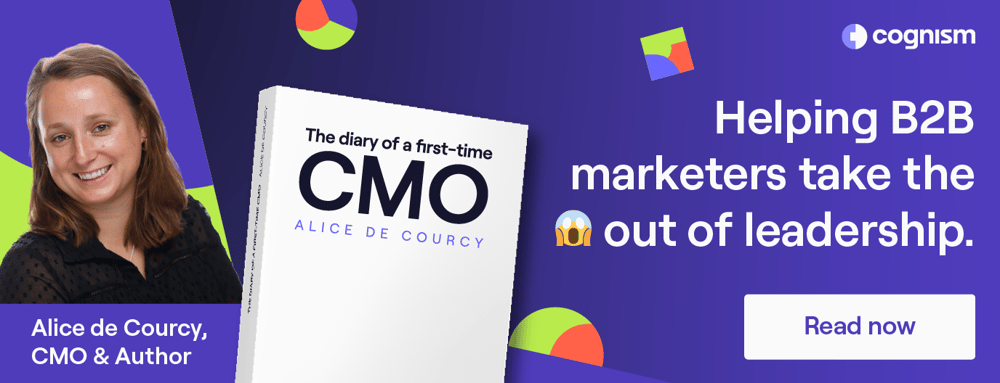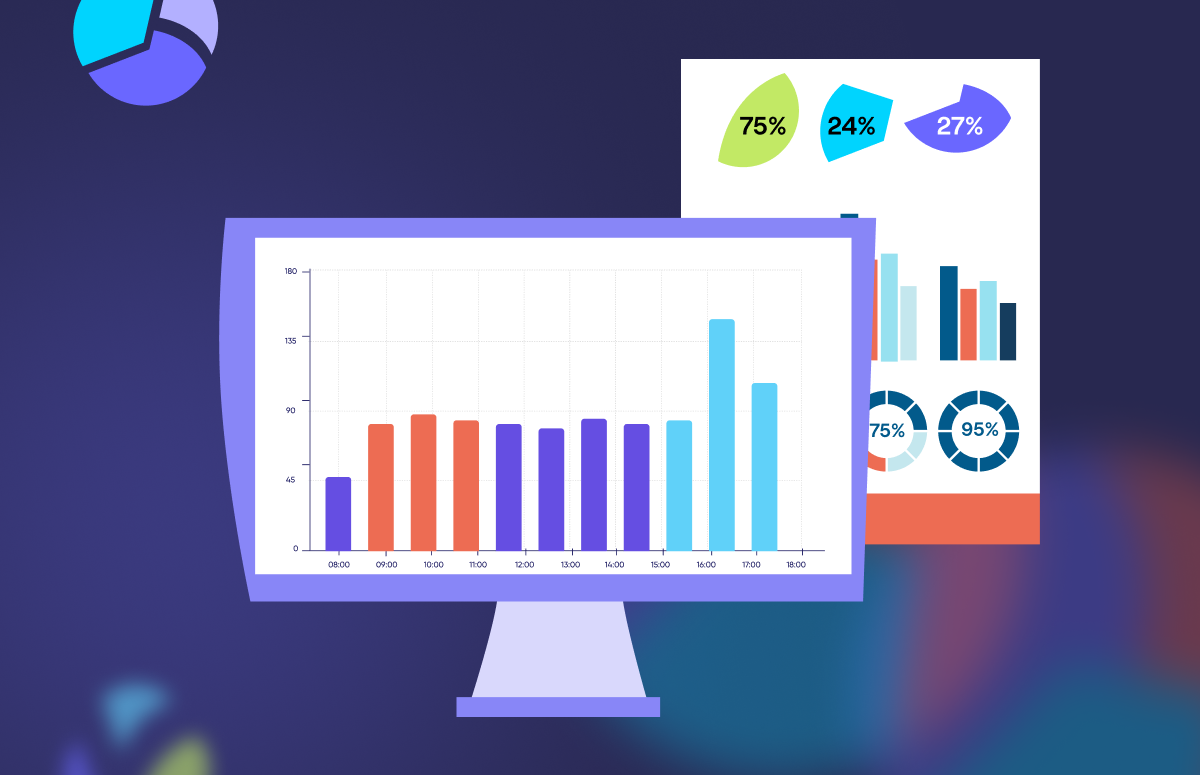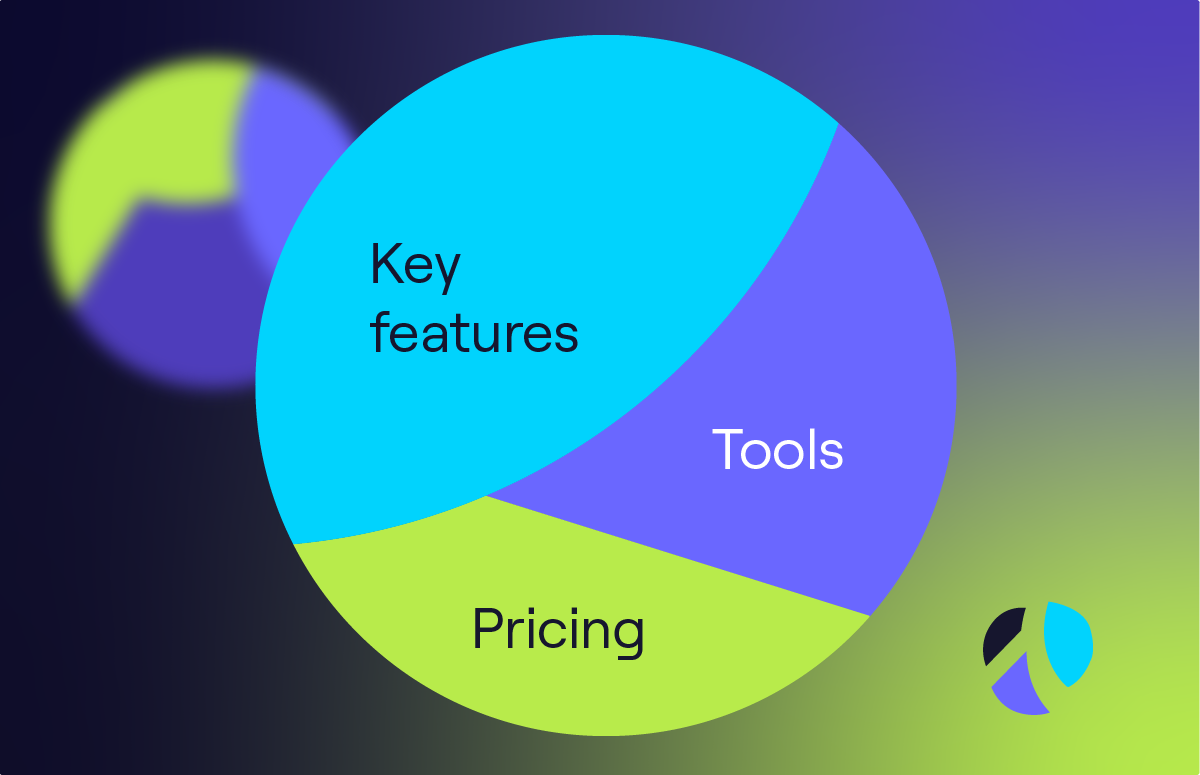Data Driven Marketing: Boost ROI & Master Audience Insights
Data driven marketing insights:
We live in the data age, where every day, marketers have access to more information from more sources than ever before, which leads us to data driven marketing.
Data driven digital marketing empowers businesses to make informed decisions, optimise strategies, and enhance customer experiences.
This should be music to your ears.
Let’s find out why 👇
What is data driven marketing?
Data driven marketing involves strategically using data to inform and optimise marketing efforts. Marketers can gain insights into customer preferences and trends by analysing data from various sources—such as customer interactions, online behaviours, and demographic information.
This approach enables the creation of personalised campaigns that resonate with target audiences, leading to improved engagement and conversion rates.
The information can come from previous campaigns, web analytics, various marketing technologies, and specialist data providers.
Anything that gives you insight into your current activities and target market. No information is irrelevant, as every bit of new information could guide you to a new idea or approach.
Think of it like a conductor standing before an orchestra. The data helps to guide and ensure that the different sections of your marketing strategy are performing to their potential. You want everything working together in perfect harmony and hitting the right notes to create a successful B2B sales symphony.
Data driven marketing vs traditional marketing
Traditional marketing often relies on broad audience targeting and intuition-based strategies, utilising channels like print media, television, and radio.
In contrast, B2B data driven marketing focuses on:
- Personalisation: Crafting tailored messages based on individual customer data.
- Precision targeting: Reaching specific audience segments with relevant content.
- Measurable outcomes: Utilising analytics to assess campaign performance and ROI.
This shift from a one-size-fits-all approach to a more targeted strategy allows for more efficient use of marketing resources and improved customer satisfaction.
What are the benefits of data driven marketing?
So, we know what a data driven approach is, but why is it good for business?
Let’s go back to our music analogy. Imagine you need to hire a band for an event, but you don’t know anything about the audience. There are too many variables.
Let’s make it a bit easier: you find out the audience likes the guitar as an instrument. Flamenco music has guitars, but then again, so does heavy metal. What do you do?
What if you discover that the audience is middle-aged, from Texas, and has been shopping at a store famous for selling cowboy hats? Now, if you booked a country western band, your chances of it being the right call suddenly increased significantly. You’d be all “Much obliged data!” because it helped you make a better decision.
Here are more reasons why a data driven marketing strategy benefits your team:
- It enables you to identify your audience.
- You’ll generate more quality leads.
- It allows you to craft compelling content.
- Your campaigns will become more effective.
- You’ll make more efficient use of your budget and time.
- You’ll become a better marketer.
What are the challenges of data driven marketing?
Like anything worth doing, your journey into the world of B2B data driven marketing will not be without challenges. Data overload and privacy concerns are two of the most common challenges.
1. Data overload
With so many data points at play, you may be overwhelmed by a cacophony of information.
This is where advanced analytics tools become a lifesaver. They help marketers make sense of all the data to decide what is relevant and where the priorities should lie. Here are some ways to overcome data overload for better data driven campaigns:
Data filtering and segmentation
You can better use large volumes of data by breaking it down into different categories. For example, if you have a lot of customer interactions on your website, you can filter the data based on demographics, engagement levels, or interest points and tailor responses to match.
Data visualisation
Turning spreadsheets into visuals like graphs, charts, and maps will help you make better sense of a mountain of marketing data. Advanced analytics helps transform raw data into understandable visual representations to identify data driven marketing insights and trends.
Real-time monitoring and alerts
Speed is of the essence, and most of the time, being able to make a change or test a hypothesis sooner rather than later can make a real difference to your bottom line. With advanced analytics tools, you get real-time monitoring and alerts to fix issues or jump on opportunities as they arise.
Predictive analytics
By using predictive analytics, you can forecast future trends based on historical marketing data. This proactive forecasting helps you stay ahead of the curve and make informed decisions.
For example, a B2B tech company could use predictive analytics to foresee potential shifts in market demand. By analysing historical purchase patterns and industry trends, they can preemptively adjust their product offerings or marketing strategies. This turns the challenge of data overload into a forward-looking symphony of strategic initiatives.
Machine learning
With machine learning, you can refine a data driven marketing solution’s understanding of data patterns over time. This continual learning process enhances the tool’s ability to extract meaningful insights from ever-expanding data.
For example, a B2B service provider could use machine learning within analytics tools to adapt and refine an algorithm as their customer interactions evolve.
2. Data privacy
You don’t want a data breach to become a requiem for your brand. Trust is easily lost and not easily regained, so it’s imperative that you take steps to ensure that any sensitive information and personal data you collect or transmit remain secure.
Here are a few ways to ensure you keep in tune with your data security responsibilities when doing data based marketing:
Data encryption
Implement robust data encryption to keep your customer data confidential. This is especially important if you are doing data driven email marketing. Personal data like email addresses are protected by GDRP and CCPA compliance laws.
The last thing you want to happen is to erode the trustworthiness of your company. By ensuring that all the data you collect and distribute is encrypted, you can safeguard any potential access to personal details.
Access controls and authentication
Put strict controls on your marketing platforms and databases that only allow access to authorised personnel. You can expand this to include role-based access controls (RBAC) that only allow individuals to access data within their scope. Employing strong authentication methods, such as multi-factor authentication (MFA), is also good.
Regular security audits and monitoring
Conduct regular audits to assess the effectiveness of your data security measures. Implement continuous access logs and monitoring of user activities to detect unusual patterns or potential security threats. Prompt detection of anomalies allows for timely investigation and response, minimising the impact of a security incident.
Employee training and awareness
Humans aren’t perfect, and mistakes will happen. However, you can reduce the chances of a team member causing a security breach with proper training and refreshers on data security best practices via a solution like Meta Compliance.
Training should include identifying phishing attempts, secure password management, and adherence to data handling policies. A well-informed team is key to keeping your B2B data safe and sound.
Vendor security assessment
If you use third-party vendors or tools, do thorough security assessments before onboarding them. Only hire vendors that follow robust data security practices, use top-level encryption, and comply with the relevant regulations. Regularly review and update your contracts with vendors to include specific security requirements and expectations.
For instance, Cognism is a data vendor that gives teams the contact details of the decision-makers you want to do business with. The tool is CCPA and GDPR-compliant and checks numbers against DNC lists in 13 countries. This is more than other providers.
Using a tool like Cognism, you can power your data driven performance marketing and sales, improve email deliverability rates and increase qualified leads by up to 60%!

“Having better-quality data has increased our email deliverability rates to 95%.” “With other software we trialled, they all looked great on the surface, but when I searched for employees of my company, there were three of me, for example, and the details were incorrect as well. So straight away, we could see the difference.” “We were offered a lot of add-ons, but the one thing that we needed was reliable data. You can add so many things, but if the data is not up to date and high-quality, it defeats the whole purpose.”
What are the top examples of data driven marketing?
There are many channels where data can help improve your B2B marketing effectiveness. Let’s explore some examples of how a data driven strategy can become the soundtrack of successful sales.
1. Content marketing
Your company’s website isn’t doing so well in search engine rankings. By diving deep into SEO research, you can identify keywords and market trends that will make your website more relevant.
By finding low-competition, high-traffic keywords and strategically incorporating them into your content, you can boost your organic search rankings and attract a more targeted audience.
So now you’re easier to find, and those who do find you are more interested in what you say. You’ve just experienced data driven precision.
Here’s an example of how Cognism’s approach to data driven marketing improved site traffic and traffic value over the last five years:

2. Data driven email marketing
Remember when emails were like messages in a bottle, hoping someone would find them in the vast digital ocean?
By using data driven metrics like open rates, click-through rates, and conversions, email campaigns will reach more of the right inboxes at the right time.
Email automation platforms and analytics allow you to track and analyse open rates to understand which subject lines, content, or send times work best for your audience.
By crafting messaging and visual appeal, your emails are more likely to be opened.
3. Campaign marketing
As a B2B campaign marketer, you want to create campaigns that are relevant and aligned with the mindsets of your audience. Marketing data is the amplifier that’ll make your campaigns resonate. If your content shows you understand a customer’s pain point, you’re already ahead.
Imagine you’re a SaaS company in a highly competitive landscape. By leveraging data analytics, you identify a key audience segment within your target market – businesses struggling with outdated legacy systems.
Using this insight, you craft data driven marketing campaigns that show how easy it is to transition from an old system to a new one using your proprietary integration process.
You’ve addressed a pain point and positioned yourself as a sought-after solution, all to an audience ripe for the picking.
Learn from Cognism. Here are the steps we follow to set up data driven B2B marketing campaigns👇
4. Lead nurturing
Good lead nurturing takes your prospects on a journey from start to finish.
Imagine a B2B company tracking lead engagement through website visits, content downloads, and email interactions. By assigning lead scores based on these engagements, you can identify when a lead is hot and ready for a sales conversation.
It’s not just about nurturing data driven sales but strategically moving leads through the funnel.
5. Performance marketing
A high return on investment is the main prize, and data will help you hold it aloft. By analysing the performance of your paid ads across various channels, you can optimise them in real-time by measuring metrics like impressions and click rates.
This means a less wasted budget and higher quality and quantity of sales leads.
Imagine you’re an online clothing retailer. Data driven B2B marketing can help you identify a segment of customers who prefer sustainable and eco-friendly fashion choices. With this insight, you can craft targeted ads about your sustainable clothing line. Your ads will cut through more because they align with your audience’s values.
How to implement data driven marketing strategies
You need to develop your data driven marketing strategy and all the processes and procedures to produce a finished product that impacts results.
This means researching, ensuring quality production, and keeping up with the latest trends. Which will give you the foundation to create something memorable that catapults your brand and revenue.
Here are some good things to follow when planning your data driven content marketing strategy:
1. Dive into the data
You must familiarise yourself with your company’s existing B2B marketing and sales data.
Consider:
- What’s being tracked?
- How it’s being tracked?
- Are there any gaps?
Once you understand these aspects, you can think about solutions to fill those gaps.
2. Build a content strategy
Look at your content and use critical thinking to discover what’s missing from your data driven marketing campaigns.
What should you be producing more of?
If you struggle to identify anything, look at your competitors’ content marketing for inspiration. They’ll either show you what to do or what to avoid.
3. Make marketing revenue driven
It’s easy for marketing to take a back seat in the business’s journey by simply creating articles and assets for other departments as and when needed.
A high-performing marketing team needs to stand up and lead from the front. This means ensuring the marketing team understands the broader business goals and owns the metrics specific to their roles.
Cognism is an excellent example of a company that’s stopped measuring performance on the number of MQLs produced to deals won by switching to a demand driven marketing strategy.
You can learn more about this SaaS marketing strategy here in Alice de Courcy’s book, ‘Diary of a CMO’ 👇
4. Become a product specialist
Top B2B marketers endeavour to understand what they’re selling thoroughly. This means creating sales and marketing alignment, building good relationships with the product teams and arranging training sessions with them.
Don’t make it just once-off training; keep the dialogue open, as it can be a fertile place to spark new ideas. When the marketing team knows the products back to front, your content driven marketing will improve immensely.
5. Get systematic with paid
Start your data driven advertising small to see what works, and grow your PPC campaigns organically. Don’t be afraid to test ideas and close any channels that aren’t working. When it comes to performance marketing, it pays to be brave and ruthless.
6. Set targets for your team
Each data driven marketer should have their own revenue-based targets to hit. Give the separate teams a fraction of the revenue target to hit each month; this will help inspire them to be more revenue-driven. It’s also essential to give them measurable marketing KPIs so they’ve got goals to keep them focused.
7. Review your tech stack
Stay up-to-date with the latest marketing technology and software developments. Look at what your team is currently using and if it’s providing the value you need. If it isn’t, make a case for how it can improve ROI and get buy-in from the business.
💡Here’s the marketing tech stack Cognism uses to support our data driven marketing approach.
8. Establish demand nurtures
Lead nurturing can take time, but it’s vital. Focus on each stage of an email nurture rather than just the end goal. This means measuring and changing things on the fly.
Great marketing starts with creativity, but its effectiveness is driven by data.
9. Get things done
The more you make live, the more data you’ll accumulate. So do as much as you can, even if it’s not perfect (this doesn’t mean be slack with your attention to detail), but get it out there.
You can’t be data driven until you have data to work with and existing campaigns to review. So get to work.
How do you set up data driven marketing?
Strategic data driven marketing involves several key steps:
- Define clear objectives: Establish specific, measurable goals for your marketing efforts.
- Collect relevant data: Gather data from various sources, including customer interactions, website analytics, and social media metrics.
- Ensure data quality: Regularly clean and update your data to maintain accuracy and relevance.
- Utilise advanced analytics tools: Employ tools and platforms to analyse data and provide actionable insights.
- Develop personalised campaigns: Use data insights to create targeted marketing campaigns tailored to specific audience segments.
- Monitor and adjust strategies: Continuously track campaign performance and make data informed adjustments to optimise results.
- Ensure compliance with data privacy regulations: Adhere to relevant data protection laws and obtain customer consent.
By following these steps, you can effectively harness the power of data to enhance your B2B marketing strategies and achieve better outcomes.
How B2B companies use data driven marketing
No matter how much experience your team has, reliable B2B data and data driven marketing tools will always be vital to getting your product or service in front of the right people, building a qualified pipeline, and hitting your revenue targets.
Hundreds of organisations have already experienced the positive revenue impact of verified B2B data that integrates with the workflows and tools that both sales and marketing teams love and use daily.
Here are some examples of the customer pain points Cognism solved:
Finding data in new markets
JOMA Packaging was looking for B2B data for international expansion. The solution was Cognism, which they used to:
- Achieve ROI within the first year of using Cognism.
- Identify the right contacts within its ICP.
- Segment target markets more accurately.
- Increase lead volumes by 30 to 40%.
Expand outbound activities
Plandek needed to find a solution to help build a scalable outbound process. They used Cognism as a data driven marketing platform to:
- Improve their data quality and enrichment by 85%.
- Hyper target and connect to their ICP using the Chrome Extension.
- Gain a consistent 95% email deliverability rate.
- Remove previous manual workflows.
Build an email marketing pipeline
ComplyAdvantage wanted to improve the B2B data that supported their account based marketing efforts. Cognism helped them:
- Increase conversion rate by 15%.
- Obtain high-quality mobile numbers in the US and EMEA.
- Book 10% of new business meetings with Cognism data.
- Reduce email bounce rate to 6%.

“Our bounce rate benchmark is 7%, Cognism comes in at 6%. Our conversion rate benchmark is 14%, and Cognism comes in at 29%. Having high-quality data is not a nice to have. It’s a must-have.” “Cognism is our lead platform in our lead gen stack.”
These are just a few ways B2B companies can use data driven marketing insights to achieve impressive revenue results. If you want to learn more from in-depth case studies from data driven marketing companies, here’s a link to some of Cognism’s greatest hits 👇
Read our data driven marketing book
A few years ago, Cognism started using data driven marketing to drive revenue success.
Now, we’re giving all our secrets away for FREE! Check out our Deman Gen Playbook to discover how to use data to drive demand.
Click the banner for access 👇



